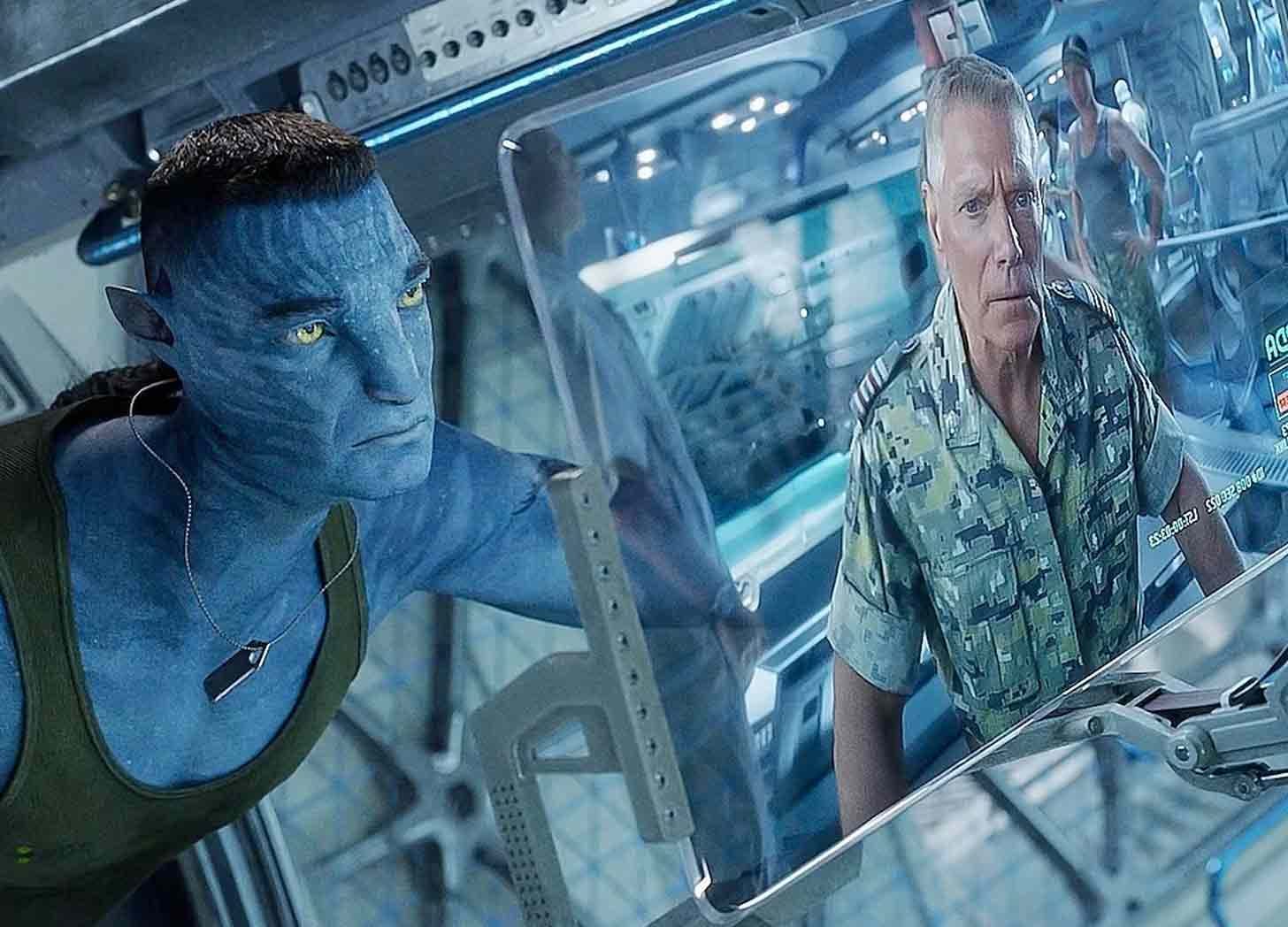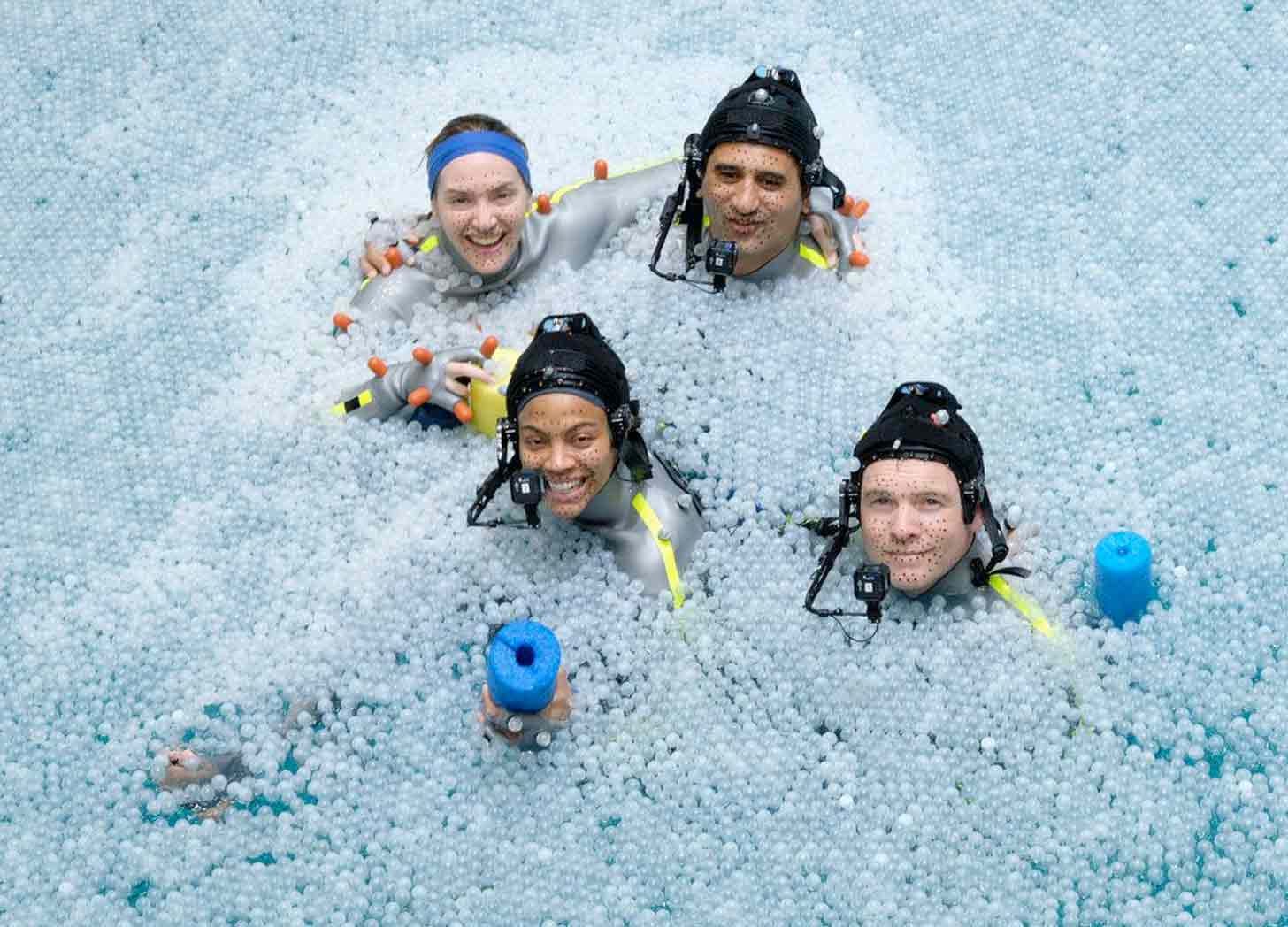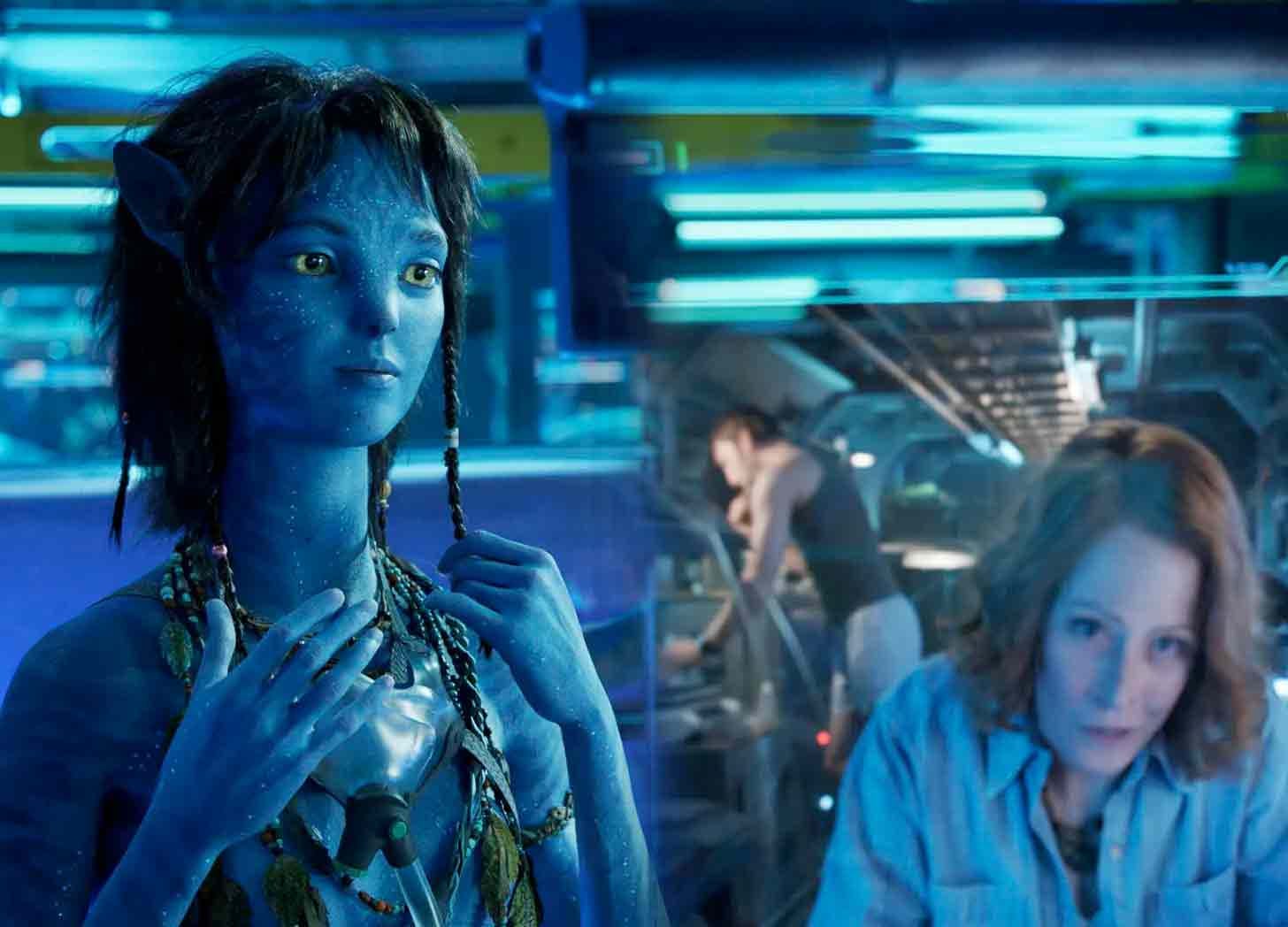Review: Avatar: The Way of Water
Is James Cameron's sequel worth the wait?
In 2009 director James Cameron wowed audiences with Avatar, a mo-cap, CGI live-action hybrid sci-fi action film that went on to become the most-successful movie of all time. Audiences were enthralled, enraptured, and swept away by the magical digital landscapes, colorful characters, and big-screen 3D appeal, so much so that some folks even had to go to therapy over it, convinced that the real world paled in comparison to the gorgeous faux one that Cameron created. It was the water cooler movie of the year and people went back in droves to re-experience it. And then…nothing.
Cameron took the success of Avatar and decided to invest in the franchise for not just one sequel, but FOUR sequels, stacking his filmography with more work than most can complete in a lifetime. But, this was James Cameron, the architect of The Terminator (and the much-better sequel Terminator 2: Judgment Day), Aliens, The Abyss, True Lies, and Titanic (for which he won Best Director). He is no simple auteur, but rather a revolutionary filmmaker, one who consistently has pushed the bounds of his craft from film-to-film, raising the bar for his peers and ushering in new and better ways to bring art to life on film.
That’s not hyperbole, either. Even the biggest Cameron hater can’t deny what he’s done for the craft. (Wait, are there Cameron haters? I have yet to meet one, but it goes without saying that if there’s something to be loved, then there’s always someone that hates it).
Now, 13 years later, the question on everyone’s lips is whether or not Cameron can outdo himself yet again and somehow bring audiences back to a world that feels all but forgotten by now. As someone that was floored by the spectacle of the first film, the story was such a warmed-over retread of films like Dances with Wolves or A Man Called Horse, that I began to loathe it, even scoff at those that held it in high esteem. However, in the ensuing years since its debut, I have changed in some tremendous ways, which is something I constantly revisit when it comes to film. As we grow and change, so to does our experience in watching films.
I took my son to see the first film recently when it was re-released in anticipation of the sequel (he was born the year the first Avatar was released and had yet to experience it) and I found that it went down a lot easier and I was able to navigate around the weak, preachy story issues and allow myself to settle into the world of Pandora again, this time with a fresh perspective, born of many things, not least of which involved becoming a father and starting a new career after the military (and now doing so again).
Seeing the movie again (in IMAX 3D, of course), helped create hype for the sequel, where there was very little before. Now, having experienced the sequel (with my son, now a teenager), it further demonstrates that James Cameron is not only one of the greatest filmmakers of all time, but an artistic pioneer. Again, this isn’t meant as hyperbole. Cameron has proven, one film at a time, that he simply will not stop elevating his work. If there’s a plateau, he hasn’t found it yet, and at 68 years old, I hope he continues to try and find it. He is one of those rare filmmakers who doesn’t level out, held arguably by greats like Ridley Scott, Steven Spielberg, and Quentin Tarantino.
Avatar: The Way of Water surpasses the original in every single way, from a technical, artistic, and creative level to the performance and character level, and finally to the story and narrative level. Where things felt often borrowed or simplistic in the first film, they are now more compelling and revealing. Where characters felt cartoonish and stereotypical, they now feel fleshed-out, relatable, and complex. What has become even more evident with Avatar: The Way of Water, is that James Cameron is one hell of a sequel filmmaker. That may sound kind of silly, but it’s a rare thing to nail a sequel, let alone surpass the original and Cameron has done it three times now (T2, Aliens, and Avatar 2).
The story picks up shortly after the end of the first film, which has Marine Veteran Jake Sully (Sam Worthington), now fully transferred into the body of his Na’vi clone and raising a family with his wife, Neytiri (Zoe Saldana). In short, they’ve been busy in that department, now parenting five kids, three of them biological, including the eldest, Neteyam (played by Jamie Flatters), the middle-child, Lo’ak (played by Britain Dalton), and their youngest, Tuk (played by Trinity Jo-Li Bliss). The other two are Kiri, a teenaged offspring of Sigourney Weaver’s avatar from the first film (and played by Weaver in the sequel), as well as a human child, called Spider (played by Jack Champion) who was left behind when humans vacated Pandora, who happens to be the illegitimate offspring of the now-deceased villain Quaritch, who is basically adopted by Jake and Neytiri.
It’s a convoluted affair and you may find yourself confused about who is who, but with a three-hour runtime you get plenty of opportunities to get to know them all. Rather than being a slew of confusing alien characters, Cameron (along with screenwriters Amanda Silver and Rick Jaffa) gives each of them unique characteristics that set them apart from one another and allow you to settle into their individual journeys, each of which go in some surprising directions.
The first film didn’t exactly set things up for a sequel. It was very much a one-and-done kind of story that could easily have left things finished had the movie not become the most-successful of all time. But, Cameron obviously didn’t write four more films to be about nothing. The first Avatar serves as an introductory course to the world he’s creating. Now that we’re all caught up, the franchise is able to expand in every way possible, not only going from the jungle to the sea, but creating situations, characters, and conundrums that make everything a lot more interesting.
For a time, there was relative calm on Pandora with the Na’vi. Jake led his adopted tribe, fathered children, and lived peacefully. But, humans later returned, this time with bigger ambitions than mining for unobtanium, an energy-creating ore, which is all but forgotten about in the sequel. Their sights are now on moving the human race to Pandora, as Earth seems to be in dire straits. It’s a bit cryptic and light on details, but with three more films to go there’s room to fill in those gaps later.
The human arrival ushers in a new leadership in the form of General Ardmore (played by Edie Falco), as well as the use of Na’vi clones of Quaritch and his troops, all of whom died in battle at the end of the first film. In addition, new tech is abundant, including drone bots that can build entire structures within days, which rapidly expands humanity’s foothold on Pandora, which now even includes a railway.
Sully and his tribe immediately take to war with the humans, seemingly because they’re attempting to move in without asking, and destructively so. When it comes to human motives, Cameron’s story wanes, as almost every character derived from Earth is portrayed as a dutiful, uncaring, and robotic presence that’s merely there to take, destroy, and pillage. There’s truth in human motives that way, but it’s also far more complex than human=bad, which is probably the biggest fault I can find in the sequel. A minor attempt is made with Jemaine Clement’s Dr. Garvin, who takes part in some of the barbaric tasks in the film, but reluctantly and supposedly in the name of science. His part could’ve been beefed up a bit to show the side of humanity that isn’t all drone-like monsters, but it feels half-hearted, even if Clement is a welcome presence.
The Quaritch clone (his existence is well explained overall with some retro-fitting to the first film’s events) makes for a strong adversary, as he’s an unflinching, unrelenting force that’s hellbent on killing Jake Sully. His first mission into the jungles of Pandora involves returning to the place of his human form’s death, which was where Avatar: The Way of Water showed that it was far more interested and invested in the characters this time around. Quaritch, now existing as a clone with no memory of anything prior to a few days before his death, is confronted with the corpse of his human form, which is a particularly cool moment that heightens his journey and calls into question his very existence.
The additional complexity of Spider’s inclusion in the story makes Quaritch that much more interesting. He’s a Na’vi clone of his human self, confronted with his now grown bastard, who has himself gone native with Jake Sully and his family. It’s this kind of complexity that makes the sequel so much more better than the original, as it complicates things for everyone, including Neytiri, who views Spider as an outcast that should be with is “own kind”. Neytiri, in all her warrior-mother spirit, is a flawed character in that way, as she is still quick to anger and capable of terrible things when it comes to protecting her tribe, which in this case is her immediate family.
The Sully offspring (and adopted offspring) take center stage in Avatar: The Way of Water, which I thought would be a slog at first. But, each of them have a role to play, a distinct personality, and a journey that brings them closer together (and further apart). Cameron made the film while raising teenagers himself and now that I’m also the father of a teenager, the parallels and relatable factors are intrinsic to the events in Avatar: The Way of Water. And it’s not a bunch of cutesy, goofy humor, either. In fact, there’s very little humor in the film, instead replaced by a natural flow of characteristics, which run the emotional gamut. Anyone raising a teenager knows this all too well, and the film exemplifies the trials and tribulations of characters on the brink of adulthood all too well.
Jake and Neytiri aren’t in the forefront of the events as much as before, but that doesn’t negate their involvement in the story. Jake, raising his family in military fashion, is the patriarch of his own little tribe, who leaves the jungles behind in order to protect his family from the never-ending pursuit of Quaritch and the human invaders. He seeks solace with the Metkayina clan, a sea-farring group of Na’vi who have adapted and evolved to their oceanic world. This brings a whole new level of visual thrills and awe-inspired spectacle, as The Sullys assimilate into this new world.
The underwater sequences are unmatched by anything ever shot in the environment, which Cameron has continually perfected with past films like The Abyss and Titanic. He’s no stranger here. And, while some may like to think that it’s just all digital effects, the fact is that every single one of the cast had to shoot their underwater scenes 30 feet below, most without scuba gear. This is one of many reasons the film took so long to release, as a full year of prep went into immersing the actors in their new environment, learning to breathe underwater for up to six minutes at a time. Those are all amazing tidbits about the making of the film, sure, but the fact of the matter is that it absolutely shows in the finished product.
A great deal of the film is spent on The Sullys adapting to their new environment and how each of the children fare in doing so. Here, the film becomes more of a coming-of-age adventure, rather than a hard sci-fi action film (but, don’t worry, that aspect returns in the third act). It’s a refreshing refrain for Cameron, who simply allows the audience to go deeper with these characters (and their underwater friends), rather than pile on more and more action to keep you entertained and distracted. Instead, it allows you to invest in the characters enough that you care when the stakes jump in the final act, creating an air of anxiety surrounding their safety. And none of it is guaranteed.
Sigourney Weaver’s Kiri, the teenage adopted daughter of Dr. Grace Augustine’s avatar, is something of a savant to Eywa, the Na’vi god of Pandora, and her connection (let alone birth) is something of a mystery that builds throughout the film. Weaver is excellent in the role and hats off to a 73-year-old woman playing a 14-year-old kid to perfection. Kiri’s connection to Spider makes for an interesting dynamic as well, as both are obviously attracted to one another, possibly in love, but torn between two worlds. Spider, too, is pulled in a direction throughout the film that forces him to confront his own parentage that takes things in a fascinating direction that’s sure to unfold in potentially dire ways with future entries. It’s this kind of depth that pulled me into Avatar: The Way of Water, right through the explosive finale.
Speaking of the final act, Avatar: The Way of Water goes out with a bang, reminding audiences that James Cameron may be an ocean-faring enviro-hippie, but he can stage action and spectacle like Beethoven could compose a symphony. The action is big, explosive, kinetic, and vibrant, taking the necessary pauses before it ramps up again to keep you on the edge of your seat. There’s so much going on that you may find yourself getting a little dizzy, especially with the enhanced frame rate and 3D. Cameron not only pushes the limits of film, but the limits of an audience in that way (the best way, I might add). He almost guarantees you’ll be back for a second helping, just to absorb everything you missed the first time as your eyes struggled to keep up.
Make no mistake, there are things in Avatar: The Way of Water, that will absolutely challenge what your mind is capable of interpreting. To me, this is one of the highest forms of art. When you see something that makes you stop, contemplate, and discern what’s happening, then art has achieved something beyond the scope of mere entertainment. Avatar: The Way of Water may be a three-hour movie about blue-skinned aliens, but it puts things onscreen that have never been seen before, or at least haven’t been seen before like this.
When the dust settles (or the water dries), there will surely be varying takes on Avatar: The Way of Water. Some will be put off by the frame rate, some will be confused about the characters and who they are, some will feel it’s too long, and some will simply be bored. Most, however, I think will find that the film is, if nothing else, the reason we go to the movies. Sitting in a dark IMAX theater and wearing 3D glasses for three hours watching a James Cameron sci-fi epic sure made me feel like I got my money’s worth, but it also made me think a lot more about the characters, setting, and possibilities for the future of the franchise, rather than fading into obscurity over the years. In an era where comic-book films are all about the long narrative, Cameron has now thrown his hat into the ring, but with his own creative endeavor. After feeling dismissive of the first film for so long, I’m ready to go native with Cameron after Avatar: The Way of Water.













Great review Paul!!!
Bravo Sir.